In today’s digital era, organizations face an overwhelming amount of data generated from various sources. Managing this data effectively is crucial for maintaining regulatory compliance, minimizing risks, and leveraging data as a valuable asset. This is where information governance comes into play. Information governance refers to the framework, policies, and processes that enable organizations to manage their data and information in a structured and controlled manner.
- Definition of Information Governance
- Importance of Information Governance
- Key Components
- Benefits of Implementing
- Challenges in Implementing
- Best Practices
- Regulatory Compliance
- Information Governance in Different Industries
- Role of Technology in Information Governance
- Steps to Establish an Effective Information Governance Program
- Case Studies of Successful Information Governance Implementation
- Future Trends in Information Governance
- Conclusion
- FAQs
Definition of Information Governance
Information governance can be defined as a strategic approach to managing and controlling an organization’s information assets throughout their lifecycle. It involves establishing policies, procedures, and guidelines to ensure data integrity, availability, and security while complying with relevant legal and regulatory requirements.
Importance of Information Governance
In today’s data-driven business landscape, information governance holds immense importance for organizations. Here are some key reasons why information governance is crucial:
- Risk Management: Effective information governance helps mitigate legal, financial, and reputational risks associated with data breaches, non-compliance, and data loss.
- Data Quality and Integrity: Information governance ensures data accuracy, completeness, consistency, and reliability, enabling organizations to make informed decisions based on reliable information.
- Regulatory Compliance: Information governance helps organizations comply with various regulations, such as the General Data Protection Regulation (GDPR) and the Health Insurance Portability and Accountability Act (HIPAA), by establishing appropriate data handling practices.
- Cost Optimization: By managing data effectively, organizations can avoid unnecessary data duplication, reduce storage costs, and optimize resource allocation.
Key Components
To establish an effective information governance program, organizations need to consider the following key components:
- Policies and Procedures: Developing comprehensive policies and procedures that outline how data is managed, stored, accessed, and disposed of within the organization.
- Data Classification: Categorizing data based on its sensitivity, value, and regulatory requirements to determine appropriate security and access controls.
- Data Lifecycle Management: Implementing processes for data creation, storage, retrieval, archiving, and disposal, ensuring adherence to retention and destruction schedules.
- Data Security and Privacy: Implementing measures to protect data from unauthorized access, ensuring data privacy and confidentiality.
- Records Management: Establishing systems for managing records, including retention, retrieval, and disposal, to meet legal, regulatory, and business requirements.
- Data Governance: Defining roles and responsibilities for data stewards, data custodians, and data owners, ensuring accountability and ownership of data.
Benefits of Implementing
Implementing information governance offers numerous benefits for organizations:
- Improved Data Quality: Information governance ensures accurate, consistent, and reliable data, enabling organizations to make better decisions based on trustworthy information.
- Reduced Risks and Costs: By implementing proper data security measures, organizations can mitigate the risks of data breaches, non-compliance, and associated financial penalties.
- Enhanced Regulatory Compliance: Information governance helps organizations comply with data protection regulations and avoid legal repercussions.
- Efficient Data Management: Streamlined data management processes result in improved operational efficiency and reduced storage costs.
- Data-driven Decision Making: Access to accurate and timely information empowers organizations to make data-driven decisions, leading to better outcomes and a competitive edge.
Challenges in Implementing
While information governance offers numerous benefits, organizations often face several challenges during its implementation. Some common challenges include:
- Lack of Awareness: Many organizations fail to recognize the importance of information governance or lack awareness of the risks associated with poor data management practices.
- Organizational Silos: Data is often managed in isolated departments or business units, making it difficult to establish a cohesive and enterprise-wide information governance program.
- Resistance to Change: Implementing information governance requires a cultural shift within the organization, which can be met with resistance from employees accustomed to existing practices.
- Complexity of Data Ecosystems: With the proliferation of data sources and formats, managing and governing diverse data types can be challenging.
- Technological Limitations: Outdated systems and insufficient technology infrastructure can hinder effective information governance implementation.
Best Practices
To overcome these challenges and establish a robust information governance program, organizations should consider the following best practices:
- Executive Sponsorship: Obtain support and buy-in from senior leadership to ensure the allocation of necessary resources and promote a culture of information governance.
- Risk Assessment: Conduct a comprehensive assessment of data risks, including vulnerabilities, threats, and compliance requirements, to identify areas of improvement.
- Data Mapping: Gain a clear understanding of data flows and systems within the organization to establish appropriate controls and policies.
- Employee Training and Awareness: Provide training programs to educate employees about information governance principles, policies, and their role in data management.
- Continuous Monitoring and Auditing: Regularly monitor and audit data management practices to identify deviations, non-compliance, and opportunities for improvement.
Regulatory Compliance
One of the critical aspects of information governance is ensuring compliance with relevant regulations. Organizations must align their information governance practices with applicable laws, such as GDPR, HIPAA, Sarbanes-Oxley Act (SOX), and others. By implementing information governance, organizations can establish processes and controls to safeguard sensitive data, ensure privacy, and meet legal requirements.
Information Governance in Different Industries
Information governance is applicable to various industries, including:
- Healthcare: Effective information governance ensures the privacy and security of patient data, compliance with healthcare regulations, and improved clinical decision-making.
- Finance: Financial institutions benefit from information governance by enhancing data accuracy, managing risks, meeting regulatory requirements, and improving customer service.
- Legal: Law firms and legal departments rely on information governance to manage and protect sensitive client data, streamline legal discovery processes, and ensure compliance with legal obligations.
- Government: Information governance plays a crucial role in government agencies by ensuring transparency, data security, and compliance with public records laws.
Role of Technology in Information Governance
Technology plays a vital role in supporting information governance efforts. Organizations can leverage various tools and technologies to enhance data management and governance processes, such as:
- Data Classification and Discovery Tools: Software solutions that automatically classify and discover sensitive data to facilitate data protection and compliance.
- Records Management Systems: Digital platforms for managing the lifecycle of records, including retention, access controls, and disposal.
- Data Loss Prevention (DLP) Solutions: DLP tools help prevent data leaks and ensure data protection by monitoring and controlling data movement within the organization.
- Data Encryption and Access Controls: Technologies that provide encryption, access controls, and user authentication mechanisms to protect data from unauthorized access.
Steps to Establish an Effective Information Governance Program
To establish an effective information governance program, organizations should follow these steps:
- Assess Current State: Evaluate existing data management practices, identify gaps, and assess risks and compliance requirements.
- Define Information Governance Framework: Develop a framework that outlines the goals, policies, procedures, and responsibilities for information governance within the organization.
- Establish Cross-Functional Governance Team: Form a dedicated team comprising representatives from different departments to drive the information governance program.
- Develop Policies and Procedures: Create comprehensive policies and procedures that address data classification, retention, security, privacy, and records management.
- Implement Technology Solutions: Select and implement appropriate technology solutions to support data management and governance initiatives.
- Educate and Train Employees: Provide training and awareness programs to educate employees about information governance principles, policies, and best practices.
- Monitor, Measure, and Improve: Continuously monitor and measure the information governance program’s effectiveness, identify improvement areas, and make necessary adjustments.
Case Studies of Successful Information Governance Implementation
- Company XYZ: Company XYZ, a multinational corporation, implemented an information governance program that resulted in improved data quality, reduced compliance risks, and optimized data storage costs. They successfully streamlined their data management practices by establishing clear policies, training employees, and implementing technology solutions.
- Healthcare Organization ABC: Healthcare Organization ABC implemented information governance to comply with HIPAA regulations, protect patient data, and improve the efficiency of their clinical processes. Adopting a comprehensive data classification and access control system enhanced patient privacy, reduced data breaches, and achieved regulatory compliance.
Future Trends in Information Governance
Information governance is continuously evolving to keep up with the changing data landscape and emerging technologies. Some future trends to watch in information governance include:
- Artificial Intelligence and Machine Learning: AI and ML technologies can help automate data classification, discovery, and governance processes, enabling organizations to handle data at scale.
- Blockchain for Data Integrity: Blockchain technology holds the potential to enhance data integrity and auditability, allowing organizations to maintain an immutable record of data transactions and changes.
- Privacy-Enhancing Technologies: With increasing privacy concerns, technologies such as differential privacy and secure multi-party computation are expected to play a significant role in data governance.
- Data Ethics and Responsible AI: As organizations become more data-driven, the importance of ethical data practices and responsible AI governance will gain prominence, ensuring fairness, transparency, and accountability in decision-making processes.
Conclusion
In conclusion, information governance is crucial for organizations to manage and govern their data assets effectively. By implementing robust information governance practices, organizations can mitigate risks, comply with regulations, enhance data quality, and make informed decisions based on reliable information. Embracing best practices, leveraging technology, and staying abreast of future trends will help organizations navigate the complex data landscape and unlock the full potential of their data assets.
FAQs
- What is the difference between information governance and data governance? Information governance focuses on managing the entire lifecycle of information assets, including data, documents, records, and other information types. Data governance, on the other hand, specifically deals with the management and control of data assets within an organization.
- How does information governance contribute to data privacy? Information governance ensures the implementation of appropriate policies, procedures, and controls to protect sensitive data, maintain privacy, and comply with data protection regulations.
- What are the common challenges in implementing information governance? Common challenges in implementing information governance include lack of awareness, organizational silos, resistance to change, complexity of data ecosystems, and technological limitations.
- How can organizations measure the effectiveness of their information governance program? Organizations can measure the effectiveness of their information governance program through key performance indicators (KPIs) such as data accuracy, compliance metrics, reduction in data breaches, and cost savings achieved.
- How can small businesses benefit from information governance? Small businesses can benefit from information governance by establishing efficient data management practices, reducing compliance risks, improving data quality, and leveraging data for informed decision-making.







Leave a Reply